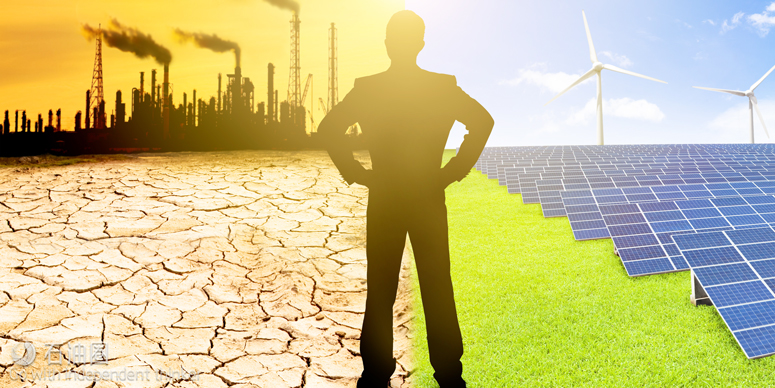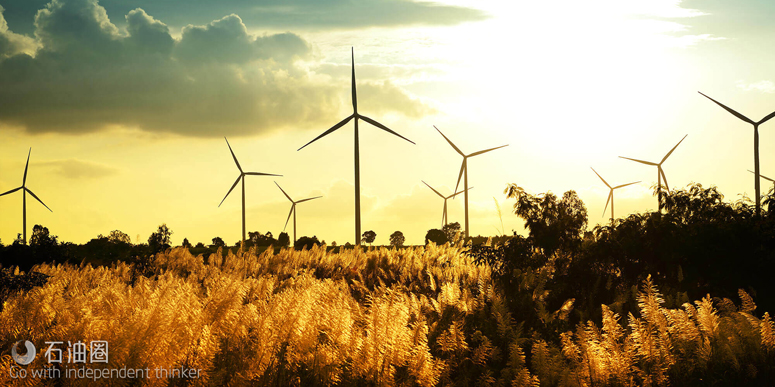Nobody can doubt China’s commitment to clean energy. China is now recognized as the global superpower in renewables, and it has established its dominance through huge investments. Conversely, the US is starting to lag behind in its clean energy commitments, which not only poses an environmental risk but could seriously damage its economy and job market.
Nobody can doubt China’s commitment to clean energy. China is now recognized as the global superpower in renewables, and it has established its dominance through huge investments. Conversely, the US is starting to lag behind in its clean energy commitments, which not only poses an environmental risk but could seriously damage its economy and job market.
Having invested a staggering $190bn into clean energy over 2015/16, this year the Chinese government followed up with a pledge to spend more than $360bn on renewable sources by 2020. To put this into perspective, in recent years China has invested twice as much as the US into renewables, and over five times as much as the UK.
China has been working on a number of ambitious domestic clean energy projects, including a 27km solar farm in the Qinghai province – reportedly the largest solar farm on earth. Moreover, China’s assertive investment in renewables is rapidly spreading overseas. Following multi-billion dollar deals in Australia, Chile, and Germany, China now owns five of the world’s six largest solar-module manufacturing firms, the largest wind-turbine manufacturer and the world’s largest lithium ion manufacturer, and has brokered further deals in Pakistan, Egypt, Indonesia, Ethiopia, and Vietnam.
Meanwhile, the world waits with bated breath to see if President Trump will keep his campaign promise to withdraw from the Paris climate change agreement, and invest more in the fossil fuel industry.
So what has motivated China, the world’s biggest polluter, to become such a champion of green energy? And why is the US, formerly considered a top contender in the green energy market, currently lagging behind?
In recent years, China has suffered greatly from pollution due to its heavy reliance on coal. The capital city Beijing is just one of many parts of the country suffering from toxic smog, which endangers the health of the population and has caused widespread anger. China’s vast territory is highly vulnerable to climate change, and rapidly-changing weather patterns are wreaking havoc, with severe droughts in the north, melting glaciers in the west, flooding in the south and increasing desertification. The investment in renewables will also guarantee a certain measure of future energy security, but the key driving force behind China’s green commitment is an economic one.
China has already identified a market in exporting low-carbon technologies such as high-speed rail, solar power and electric vehicles. Technological advances have made clean energy more financially viable in recent years, with the cost of building large-scale solar plants dropping by as much as 40% since 2010.
While the American administration plans to rekindle its outdated love affair with coal and gas, the renewable industry in China already employs 3.5 million people (out of 8.1 million people employed in the renewable industry worldwide, a figure that is expected to grow to 13 million by 2020.
The US currently employs 2.5 million Americans in renewables. Since 2014, solar panel installation alone has created more American jobs than oil and gas pipeline construction, crude petroleum and natural gas extraction combined. There are also 75,000 megawatts of wind power installed in the U.S. today which contribute by 5.4 percent to the capacity of the power grid. This is expected to double to 10 percent by 2020, then 20 percent by 2030 and will create approximately 300,000 additional jobs (8). On the other hand, coal mining accounts for around 53,000 US workers, whereas solar energy employs 209,00. Solar and wind power together are adding workers twelve times faster than the US average. The demand for renewables continues to rise, particularly in the corporate sector, where many organizations have aggressive sustainability commitments. Globally, the number of clean energy jobs available outnumbers fossil fuel jobs fivefold, according to statements made at the recent Illinois Renewable Energy Conference. Moreover, wages in renewable energy are also competitive, with average compensation growing by nearly 8% in 2016.
If the Trump administration curbs the current push for clean energy, the US is likely to innovate less, export less and constrain a rapidly growing employment sector. The first steps have already been taken as many renewables companies are slowing their hiring due to cuts in federal renewable energy funding in favor of military spending. Although there is a proposed 31% cut in spending for the EPA, the budget will not impact the solar investment tax credit, carbon tax proposals or state-based solar subsidies. The budget proposal does, however, eliminate the Advance Research Projects Agency-Energy (ARPA-E), which has been a significant source of federal funding for many energy technologies including battery storage, biofuels, and electric vehicles and this is a major concern for multiple energy storage companies which depend on private project investment as well as federal tax credits. Based on discussions with multiple energy storage companies which depend on private project investment and federal tax credits, indicators point to total cuts expected to amount to around $516 million.
However, the Paris climate agreement now has enough signatories to make it legally binding, and it is no longer tenable for the US, as the world’s second-largest polluter, to wriggle out of any environmental commitments while the rest of the world pulls its weight. When asked for its views on the Paris accord, America’s biggest oil player Exxon sent a letter to the White House stating that “it believes the Paris agreement is an effective framework for addressing the risks of climate change and the U.S. should remain a party to it, and this should serve as an efficient barometer of the big business opinions on the subject. The US could find itself subject to punitive climate-focused trade measures. Former French President Nicolas Sarkozy has already suggested a European carbon tax on American-made goods if Trump pulls out of the climate accord.
Meanwhile, it is likely to be difficult for Trump to create “millions of jobs” from oil, coal and gas. The US market is already swamped with more cheap oil than the market can handle, with refineries operating at full capacity and companies exporting oil by the tanker-load. Given that 25% of US coal exports have traditionally gone to Asia, China’s commitment to self-sustainable clean energy will undoubtedly have a further impact on the US economy in the future.
Senior Chinese climate change official Zou Ji has stated that if Trump abdicates US leadership on the Paris Agreement, “China’s influence and voice are likely to grow, which will then spill over into other areas of global governance, and increase China’s global standing, power and leadership.”
It seems that clean energy will continue to gather momentum around the world, whether or not the US is on board. The overall winners will be the first movers and shakers, and those who have the advantage of scale, and who can truly capitalize on global opportunities in terms of investment, technology and jobs. The US has already fallen behind China in the race to secure an advantage in the booming new market, and will have to act fast if they want a piece of the pie.


 石油圈
石油圈

